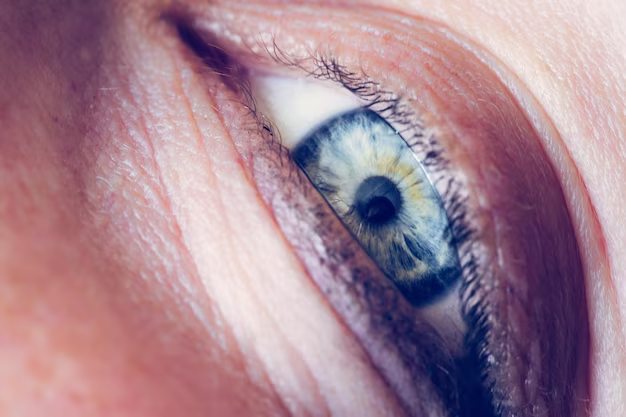What Do Cataracts Look Like? A Comprehensive Guide
Cataracts are a common eye ailment, often associated with aging, yet they remain a mystery to many until they experience symptoms firsthand. This unawareness can lead to misunderstandings about how cataracts affect vision and daily life. By exploring what cataracts look like from various perspectives, individuals can better understand the condition and its implications on vision health.
👁️ Understanding Cataracts: The Basics
Cataracts occur when the lens of the eye becomes cloudy, leading to impaired vision. Although commonly associated with older adults, cataracts can develop at any age due to various factors such as genetics, injury, or other medical conditions.
What Causes Cataracts?
- Aging: The most common cause, where the proteins in the lens degrade over time.
- Injury: Trauma to the eye can alter the lens structure, increasing cataract risk.
- Genetics: Some individuals are predisposed to cataracts due to hereditary factors.
- Health Conditions: Diabetes and other conditions contribute to cataract development.
- Lifestyle Factors: Excessive UV exposure, smoking, and poor diet can accelerate cataract formation.
🕵️♂️ How Do Cataracts Affect Vision?
Cataracts develop slowly over time, and initially, their effects on vision might be subtle. Recognizing these early signs can lead to timely diagnosis and management.
Symptoms and Signs
- Blurry Vision: One of the earliest and most common symptoms; objects can appear out of focus.
- Sensitivity to Light: Bright lights or sunlight might cause discomfort or glare.
- Color Distortion: Colors may appear dull or have a yellowish tint due to the cloudiness of the lens.
- Night Vision Problems: Difficulty seeing in low light conditions, often accompanied by halos around lights.
- Double Vision: Some cataract patients experience seeing multiple images from one eye.
How They Progress
Initially, cataracts might only affect a small part of the lens, and one might not notice any vision loss. As the cataract grows, however, it clouds more of the lens, diminishing vision quality. Regular eye exams can identify cataracts before noticeable symptoms occur.
🔍 Observing Cataracts Clinically
From a clinical perspective, cataracts present certain distinct features that are identifiable through professional eye examinations.
Diagnostic Techniques
- Visual Acuity Test: Assesses the sharpness of vision using a standard eye chart.
- Slit-lamp Examination: Allows eye care professionals to see structures at the front of the eye under magnification.
- Retinal Exam: After pupil dilation, a specialist can examine the back of the eye, noticing disruptions caused by cataracts.
What Clinicians See
During an examination, eye care professionals observe the lens’s texture and opacity. A healthy lens is clear, while a cataractous lens appears cloudy and can range in color from white to yellow or brown, depending on its stage.
⚖️ Different Types of Cataracts
Not all cataracts are the same—there are variations based on their location and onset.
Types of Cataracts
- Nuclear Cataracts: The most common, occurring in the center of the lens and primarily linked to aging.
- Cortical Cataracts: Originating at the edges of the lens and characterized by white, wedge-like opacities.
- Posterior Subcapsular Cataracts: Form quickly at the back of the lens, often affecting reading vision and causing glare.
- Congenital Cataracts: Present at birth or developing during childhood, sometimes hereditary or due to infection.
📝 Debunking Common Myths About Cataracts
Misconceptions about cataracts can lead to unnecessary fears or incorrect assumptions.
Myth Busting
Myth: Cataracts only affect the elderly.
- Reality: Although more common with age, cataracts can develop at any age.
Myth: Cataracts spread from one eye to the other.
- Reality: Cataracts don’t physically spread. However, they often develop independently in both eyes due to similar risk factors.
Myth: Cataracts must mature before they are removed.
- Reality: Modern surgical techniques allow for their removal at any stage, often improving quality of life sooner.
🌟 Practical Tips for Managing Cataracts
Managing cataracts involves a combination of lifestyle adjustments and, when required, medical intervention.
Lifestyle Adjustments
- Regular Eye Exams: Early detection allows for better management.
- Protective Eyewear: Sunglasses with UV protection can slow cataract progression.
- Healthy Diet: Nutrient-rich foods support eye health.
Surgical Options
Cataract surgery is the most effective treatment and involves removing the clouded lens and replacing it with a clear artificial one. Modern procedures are quick and known for their high success rate.
📋 Cataract Summary: Key Insights
Here’s a handy rundown highlighting essential facts about cataracts, presented in a visually engaging format:
- 👁️ Nature of Cataracts: Cloudy lens leading to impaired vision.
- ⚠️ Key Symptoms: Blurry vision, glare, color distortion.
- 🔄 Progression Route: Gradual, affecting more of the lens over time.
- 🔍 Diagnostic Tools: Eye exams, slit-lamp, retinal exams.
- 📑 Types to Know: Nuclear, cortical, posterior subcapsular, congenital.
- 🤔 Myths Dispelled: Not just an old age issue; doesn’t spread between eyes.
- 💡 Management Tips: Regular check-ups, UV protection, balanced diet.
- 🛠️ Treatment: Surgical intervention as a primary solution.
Understanding cataracts extends beyond identifying their appearance; it's also about recognizing symptoms, knowing the types, and appreciating advances in treatment options. Keeping informed empowers individuals to make educated decisions regarding their eye health, ensuring a proactive approach to maintaining clear vision even as they age.
